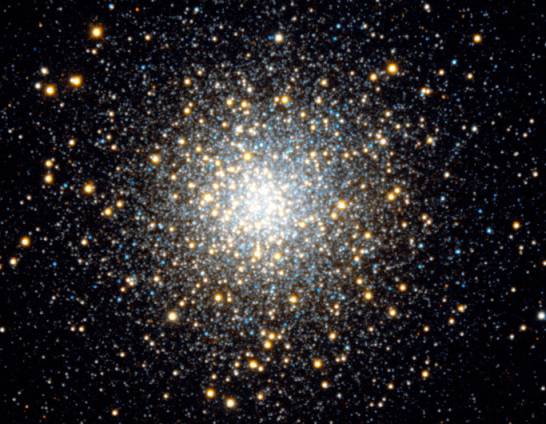Explanation: Stars like the Sun use hydrogen for fuel, "burning" hydrogen into helium at their cores through nuclear fusion. But what happens when that hydrogen runs out? For a while, hydrogen burns in a shell surrounding the stellar core and the star expands to become a red giant. The bright reddish-orange stars in this beautiful two-color composite picture of the old globular star cluster M10 are examples of this phase of stellar evolution. Yet the bright blue stars apparent in M10 have evolved beyond the simple, hydrogen shell burning stage. These stars have become "horizontal branch" giants with core temperatures hot enough to burn helium into carbon. In this image, only the barely visible, faint, gray-looking stars are likely to still be burning hydrogen at their cores.
1999 2000 2001 2002 2003 2004 2005 2006 2007 2008 2009 2010 2011 2012 2013 2014 2015 2016 2017 2018 2019 2020 2021 2022 2023 2024 2025 |
Yanvar' Fevral' Mart Aprel' Mai Iyun' Iyul' Avgust Sentyabr' Oktyabr' Noyabr' Dekabr' |
NASA Web Site Statements, Warnings, and Disclaimers
NASA Official: Jay Norris. Specific rights apply.
A service of: LHEA at NASA / GSFC
& Michigan Tech. U.
|
Publikacii s klyuchevymi slovami:
hydrogen - helium - M 10 - M 1 - stellar evolution - star - giant star - zvezdy - Evolyuciya zvezd
Publikacii so slovami: hydrogen - helium - M 10 - M 1 - stellar evolution - star - giant star - zvezdy - Evolyuciya zvezd | |
Sm. takzhe:
Vse publikacii na tu zhe temu >> | |
